Champollion är den som är känd som hieroglyfernas tolkare, få vet dock att det är ett svenskt namn – Åkerblad – som står ingraverat i det egyptiska museets fasad. Det var nämligen han som började med den svåra översättningen. Faraonernas historia har länge intresserat omvärlden. Men nu verkar den vara i full gungning. Kommer faraos land att överleva även denna kaotiska period? Och vad tränger igenom revolutionens dimmor?
Champollion is the man who is commonly known as the Hieroglyphs’interpreter. Only a few know that it’s a Swedish name – Åkerbald – that’s ingraved in the Egyptian Museum’s façade. It was him that began the difficult task of trying to translate the Rosetta stone’s engravings. Pharaoh’s history has intrigued and interested all visitors since centuries. But now it seems that it’s swinging on a thin thread. Shall the land of the Pharaohs survive yet another chaotic period? And what do we discern through the emerging shadows after the euphoria of the last Revolution?
Konspirationsteorier
Jag reste dit för att få en uppfattning om vad som egentligen var på gång. ”För ett år sedan var vi stolta över att vara egyptier. Nu har militären och islamisterna kidnappat vår revolution!” Berättar Ahmed, en liberal, för mig. Stämningen är dyster bland de flesta jag talar med. ”Jag var guide, nu är jag arbetslös” säger Jenan. ”Mina affärer blomstrade, nu står allt still” berättar Mohammed. Tahrir platsen känns kuslig. Där hänger en docka på en lyktstolpe med ett snöre runt halsen, sjaskiga tält står kvar, liksom en hel del skräp och det hatade regeringspartiets högkvarter är numera en sotsvart koloss intill Egyptens museum. Gudskelov att inte museet brann upp, tänker jag när jag kör förbi den ödsliga byggnaden. ”Det är en komplott från USA och Israel mot arabvärlden” säger Karem som uppenbarligen har tagit till sig regeringens konspirationsteori där revolutionen skylls på utländska krafter.
Conspiracy theories
I decided to travel there to find out for myself. ”One year ago we were proud to be Egyptians. Now the military and the Islamists have kidnapped our revolution!” Ahmed, a liberal, tells me. The atmosphere is gloomy amongst most Egyptians I talk to. ”I used to be a guide, now I’m unemployed” says Jenan. ”My buisiness was blooming, now everything is at a standstill,” Mohammed can’t help frowning his eyebrows. ”Our restaurant was always full, now it stands more or less empty and we don’t know if we’ll get the rights to sell alcohol with this new governement!” I don’t see any tourists in Cairo at all. I get to Tahrir only to find the square in a desolate state. A doll hangs from a pole with a rope around its neck, some tents are spread out here and there along the garbage and the hated head-quarters of the last governement’s party stands darkened by the fire as a colossal reminder of a not so distant past, next to the Egyptian Museum. ”Thank God that the Museum was saved from the flames,” I think as I pass by the deserted building. ”This is but a conspiracy from the USA and Israel to destroy and control the Arab world,” says Karem who has adopted the official theory, blaming the revolution on outsiders.
Tahrir painted by Ayman Taher
Kairos konstscen
Det finns dock ljusglimtar och det är bland annat den blomstrande konstnärsscenen. Street-art – en nyhet i detta konservativa land – syns på fasaderna, på en av Tahrirs närliggande gator. Alaa Awad är en av stjärnorna och hans ateljé är gatan. ”Så länge jag inte stoppas, fortsätter jag att uttrycka min solidaritet genom mitt måleri”. Ett stenkast därifrån står militärerna hotfullt uppradade intill ett demonstrationståg. ”För hur länge kommer de att låta sådana som Alaa vara i fred?” undrar jag.
I det gamla kolonialkvarteret, Zamalek, finner jag flera intressanta gallerier och hang-outs med en salig blandning av unga frihetsaktivister, internetuppkopplingar, nyutkomna böcker om revolutionen och kaféer där det diskuteras politik. En av de trevligaste är Loft (www.loftegypt.com) dock inte att förglömma bokhandeln/kaféet el Diwan. Den stora frågan som diskuterades var vem som kommer att bli landets president och hur mycket makt denne man kommer att få. Det finns många kandidater inför vårens val (den 23dje maj). Halvsvenskan Karima Khalil är uppväxt och har sin familj i Kairo. Hon har varit och är fortfarande aktiv och stöttar en fredlig, liberal övergång. ”Messages from Tahrir” heter den fotografibok hon har gett ut (AUC press 2011) och vars inkomst går till de som blivit skadade under revolutionen. ”Tyvärr är inte de liberala så välorganiserade” suckar Karima.
Georges Kazazian återger stämningen på sin arabiska luta under en fullsatt utekonsert på ett ruffigt kulturcentrum beläget under en trafikerad bro.
Ett modernt och uppfiffat galleri kontrasterar med kända egyptiska konstnärer – Zamalek Art Gallery. Ägarinnan visar stolt runt mig i de nymålade lokalerna som imponerar liksom konsten på väggarna och skulpturerna. Katherine Bakhoums pastellmålningar hänger på Safarkhan Gallery. Katherine är sedan länge en erkänd egyptisk konstnärinna som bor och verkar i Paris.
Karima Khalil Georges Kazazian
Cairo’s art scenery
There are however a few sunshine stories and one of them is definitly Cairo’s blooming art scenery. Street art is a novelty in this otherwise quite conservative country – and can be found in some of Tahrir’s adjoining streets. Alaa Awad is one of the upcoming stars and the street is his atelier. As long as he’s not arrested, he shows his solidarity with the revolutionaries through his art. A few blocks away, the military – fierce looking – are surveying a demonstration. ”For how long will they let artists like Alaa continue?” I wonder, as I pass by.
In the ancient colonial area of Zamalek, there are quite a few interesting galleries and hang-outs with an assortment of young activists, Internet-connections, newly published books about the revolution and cafés where the latest political events are being lively discussed. One of the nicest being Loft (www.loftegypt.com) and another one worth the detour is the bookstore/café Diwan. One of the major arguments was who’s going to become the country’s next President and how much power he’ll have. There are many new candidates coming up for the elections this spring.
The half-Swedish/half-Egyptian woman, Karima Khalil, was brought up and has her family in Egypt. She has been and still is active in supporting a peaceful, liberal transition. ”Messages from Tahrir” is the excellent photography book that she has edited (AUC Press 2011) and which income goes to the people injured during the revolution. ”Unfortunatly the liberals aren’t so well organized,” she sighes, as I ask her if the liberals stand a chance.
The revolutionary atmosphere with grafittis on the wall of a rather shabby cultural centre, situated under a heavily trafficked bridge, is enhanced by the wonderful Arabic lute played by the musician Georges Kazazian for a full house.
As a contrast, the Zamalek Art Gallery, show mostly well-known Egyptian artisits. The proud owner – Naheda el Khoury – showed me around the impeccably painted gallery with its impressive paintings and sculptures. A bit further down the road, another gallery – Safarkhan Gallery – show the pastels of the well-appreciated Egyptian-born Parisian artist, Katherine Bakhoum.
Smyckedesignern Ikram Barakat säljer både hemma och i olika butiker runt om i staden. Ajman Taher bjöd in mig till sitt underbara hem och ateljé utanför staden. Flera områden har byggts i öknen. Fattiga bor i vissa områden och i andra känns det som att vara i Florida med vaktade murar som avskärmar från böljande trädgårdar, golfbanor och vackra villor. Arkitektparet Soheir och Rami Dahan har byggt några av dessa i typisk arabisk stil med kupoltak och öppna ytor. En fröjd för ögat. Peter Wallenberg är en av de som anlitat dem. Deras hotell smyckar likt pärlor diverse oaser och havsidyller i Egypten och annorstädes. Ajman föll för parets estetik och lät dem bygga hans hus. Han började sin karriär som underhavsfotograf och blev internationellt erkänd innan han övergick till måleriet.
Nermine Hammam är en ung fotograf som utmärker sig genom att måla kitschiga färger på sina bilder. ”Jag är inspirerad av Foucault” berättar hon och visar upp de texter som förklaringar till sitt fotograferande. I mars månad kan den som är intresserad se hennes bilder på olika gallerier i Paris (www.nerminehammam.com).
The jewellery designer Ikram Barakat
sell her colourful jewellery both at home and in different shops around town. Her price-list is on the lower side and you get a good value for the money and a piece of unique jewellery to bring back home.
The artist Ayman Taher invited me to his designed home and atelier outside the city centre. Several compounds have been built in the desert. Some for the poor and others surrounded by high walls, a bit like in Florida, with guards hindering outsiders to get in to magnificient areas with lush gardens, golfs and beautiful villas. The architects Soheir and Rami Dahan have designed some of these houses in typical Islamic style with vaulted roofs and opened spaces. Stylish and simple yet highly esthetic. Their hotels adorn like pearls the oasis and sea-front villages around Egypt. Ayman also fell for the couple’s ideas and let them build his house. He started his career as an under-water photographer and became world-known as such before shifting to painting.
Nermine Hammam is a young photographer whose speciality is to paint wild colours on her pictures. ”Foucault is one of the writers that inspire me,” she says and shows me the texts that explain some of her pictures. There are two galleries showing her works in Paris in March (www.nerminehammam.com).
Ayman Taher’s house and atelier
Resa i öknen
Efter några hektiska dagar i Kairos konstnärsliv tog jag mig ut med vänner till öknen. Vi körde en karavan med flera jeepar – resan ordnades av beduinen Marzouk ( www.marzouk-dc.com ), en sann ökenräv som har bred erfarenhet sedan år ute i intet med bökiga turister. Vi körde öster ut, i riktning mot Libyen och den östra öknen. Efter oasen Bahareyya svängde vi av in i sanddynorna. Däcken tömdes på luft för att klara körningen i den mjuka sanden. Men efter en stund blev sanden hård som cement och samma procedur fick göras om fast åt andra hållet. Den som aldrig har vistats i öknen förut vet kanske inte att den skiftar lika mycket som vilket landskap som helst. Det finns den svarta öknen, den vita öknen, öken med hård eller mjuk sand, stenig eller slät, platt eller med höga kullar. Kamelen – egentligen dromedaren – är öknens konung och utmärker sig med att den har ett tusen olika namn. Bara tolv namn från sin mammas mage tills den har fötts berättade presidentkandidaten Gamal Dourrah som var med på resan.
Marzouk
På kvällen runt brasan reciterade Hassan på klassisk arabiska vackra poem. Kärlek var det genomgående temat. Jag kunde inte låta bli att fundera över var kärleken egentligen har tagit vägen i detta magdansösernas förlovade land. Hur kan man finna kärleken under en svart tältduk med enbart ett par strimmor till ögon som tittar fram under sjoket? Männen gör sig själva en otjänst när de förvandlar sina kvinnor till objekt. Var är de glada färgerna som flickorna på landet alltid klädde sig i? Var är skratten när de unga träffades i smyg i bomullsfälten?
En av beduinerna tog fram sin luta och ackompanjerade med musik och sång. Himlen var späckad med stjärnor och planeter vars mängd vi var ovana vid på grund av den ljusförorening vi ständigt utsätts för. Vi låg på rygg, trötta efter dagens ökenkörande och mätta efter att ha ätit det lamm som beduinerna lagat genom att gräva ner det helt i sanden på en bädd av brinnande kol i två timmar. Vi tältade på olika ställen, pick-nickade och åkte sandsurfing eller körde fast med jeeparna i sanddynorna på dagarna och fick gräva oss fram med spadar eller med våra bara händer. Tomheten, stillheten, oändligheten ute i öknen förstummade den mest hedniske. När sandstormen väl började vina och sandkornen stack som nålar kände jag mig väldigt ödmjuk och liten. Det var dags att köra tillbaka till stadens myller.
Trip to the desert
After a few hectic days in Cairo, I travelled with friends to the desert. We were a caravan of several jeeps – the trip was organized by the expert Marzouk (www.marzouk-dc.com), a true desert-fox with a large experience from years in the sand-dunes with unexperienced tourists, along with his team of extremely nice and competent beduins. We drove into the Western desert, in the direction towards Libya. After the oasis Bahareyya, we turned and continued in the sand. The tires had to be emptied of air to drive in the soft sand ”like the camel feet”. But after a while the sand turned hard as cement and the same procedure had to be repeated but the other way around. The desert is like any other landskape with its different shapes. There is the black desert, the white desert, the hard or the soft sand, the stony or the smooth sand, the flat or the hilly one…
The King of the desert being of course the camel and its one thousand denominations. Gamal Dourrah – a Presidential candidate and fellow traveller – told me that a baby camel has twelve names from its conception to its birth! What a homage.
At night around the fire, Hassan honored us by reciting ancient classical Arabic poems. One of the most beautiful languages there is, I thought. Love was a common theme. I couldn’t help wondering about what love will become in this land of belly-dancers? How could anybody possibly find love under a black tent with solely a pair of eyes peaking out through slim holes? Don’t the men understand that they also loose a whole lot by hiding their women this way? Turning them into objects? I miss the colourful country-girls and the youngsters’ laughs in the cotton fields.
One of the beduins took out his Arabic lute at night and played for us. The sky was full of stars usually hidden by the light-pollution we are otherwise subjected to. ”The stars move and are less clear, while the planets are brighter and don’t move”, I was told. Sure enough! Lying on my back, content and tired after the day’s driving and the delicious dinner: lamb burried in the sand and cooked over hot charcoal for about two hours. We spent the sunny days raising our tents in different places, pick-nicking in the sand-dunes, sand-surfing, getting stuck with the jeeps and having to dig them out with our bare hands and meditating in the sun-sets and wonderful sun-risings. The emptiness, the tranquility, the eternity of the desert were stunning.
When the sand-storm started, the sand felt like needles, burying its nails into any uncovered part of the skin. The tents that weren’t properly attached flew away, the sight became blurred. I wondered if we would ever make it back to civilization or if we would be buried there like any old mummy. I felt small and humble, facing destiny.
Shopping
Förutom konst finns det en hel del snygga affärer som stödjer framförallt kvinnor på landsbygden och beduinkvinnor genom att få utlopp för sin kreativitet och bli självförsörjande genom sina vackra hantverk. Det är allt från broderier på läderväskor, tvålar och handdukar, bomullskläder tillverkade av Egyptens världsberömda långfibriga bomull samt en hel serie saker gjorda efter revolutionen med tryck som ”frihet” eller ”demokrati” på. Vissa är mera exklusiva och dyrare som den eleganta ”Siwa Creations” (www.siwa.com) andra lite billigare som ”L’oiseau du Nil” med en uppsjö av olika hantverk. ”Mamelouk” bjuder på nästan allt som finns att hitta uppe i basarerna.
Slutligen är en drink i solnedgången på hotell Mariotts – det gamla palatset – bar ett måste innan hemfärden. ”Passa på så länge de serverar sprit” säger Amr till mig och fnyser. ”Kanske det blir endast turister som får dricka i framtiden om ens det!” fortsätter han. Jag ler lite snett och tänker tillbaka på Kairo när staden kallades för ”det lilla Paris” och som bevis har jag köpt boken ”Imagining Egypt” med Lehnert & Landrocks svartvita fotografier från början av 1900-talet.
När planet lyfter och flyger över pyramiderna ber jag en tyst bön att inte någon galen fundamentalist får för sig att spränga dem eller börjar klä över de faraoniska statyerna som de redan hotar med att göra. ”Ingen idolatri i vårt fromma land!” säger de. ”Ingen idioti!” hoppas jag så jag kan snart återkomma till faraos land och fortsätta att förundras över sekler av faraonisk, romersk, kristen och islamisk konst som återspeglar Egyptens tusenåriga historia.
Shopping
Apart from art, there are also nice shops that support women’s work. Their creativity and a possibility of becoming economically independent is enhanced through bying their beautiful handicrafts. I found everything from embroideries on leatherbags, soaps, towels, cotton clothes made out of the long fibered Egyptian cotton, and a whole series of objects made after the revolution with inscriptions like ”freedom” or ”democracy”. Some shops are more exclusive than others – like Siwa creations (www.siwa.com) – others a bit cheaper like ”L’Oiseau du Nil” with a large variety of handicrafts. In ”Mamelouk” they sell a full assortment of most things found in the souk and more than that.
Finally a drink at sunset in Mariott’s luch garden is a must before returning home. ”Enjoy your drink while they’re still serving alcohol!” Amr told me. ”Maybe they’ll only serve it to tourists in the future and not even that is certain any more…”. I don’t know whether to smile or to cry, remembering the times when Cairo used to be called ”Little Paris” and as a proof I bought the book ”Imagining Egypt” with Lehnert & Landrocks’ black and white pictures from the 1920s.
When the airplane lifts and flies over the Pyramids, I pray silently that no crazy fundamentalist gets the idea of blowing them up or of dressing up the Pharaoh’s statues as they’ve already threatened to do. ”No idolatry in our pious country!” they said. ”No idiocy!” I hope, so that I may soon return to the country of the Pharaohs and still be amazed over the mixture of Pharaoh’s, Roman, Christian and Islamic art that mirror Egypt’s thousands years old history.
Anne Edelstam, Paris.


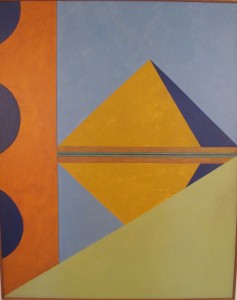
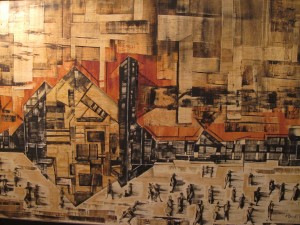

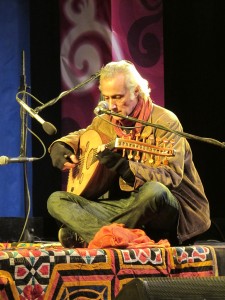
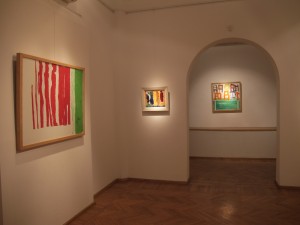


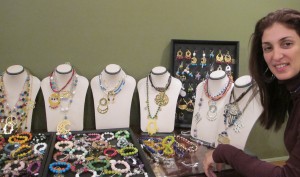
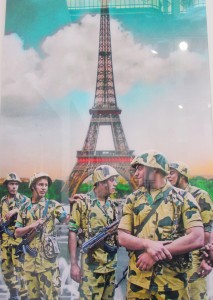
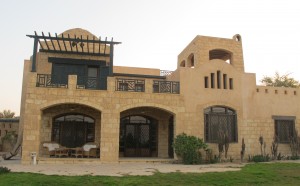

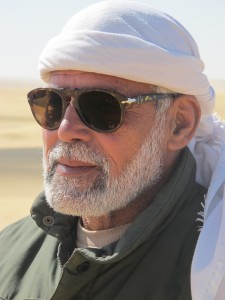
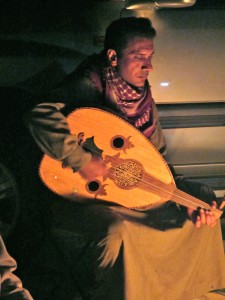
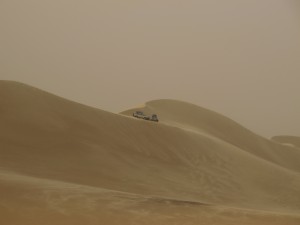


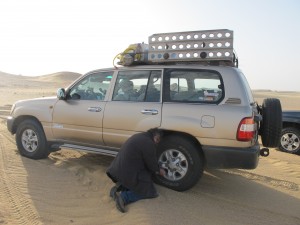


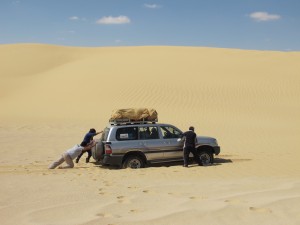

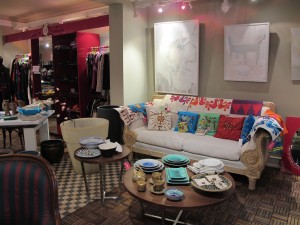
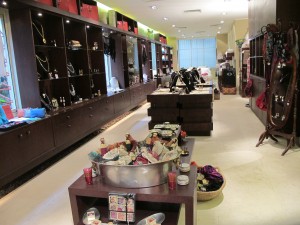
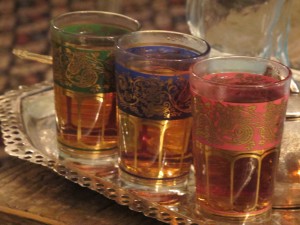
have read all your articles and they are all great. congratulations for hard work on this website.http://www.jogosdopicapau.org